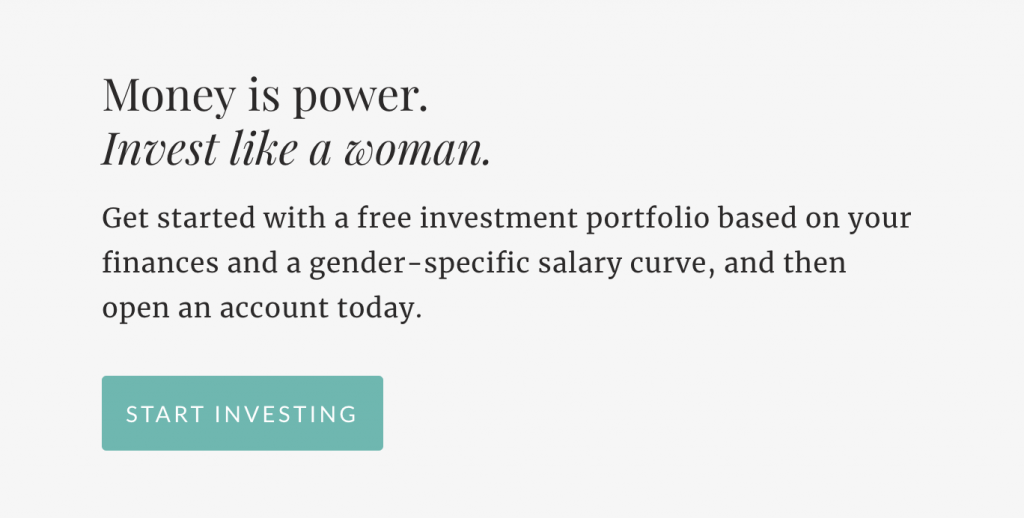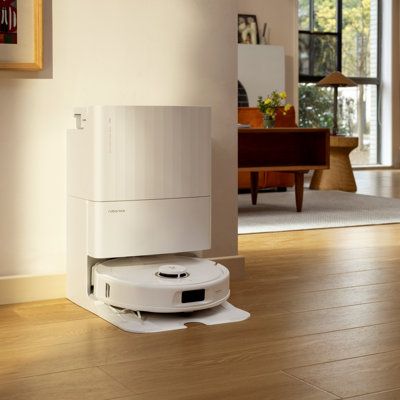Why is investing important? It’s a good question. If you’re already managing a budget and paying down debt, you might wonder why you have to add another financial task to your already long to-do list. But the truth is, money is power. And this one “to-do” might be the most important of all.
The society we live in is a capitalist one, and money steers it. It plays out in business; it plays out in politics and the way our country is run (or not), and it can even play out in our personal relationships. So, investing your money is an important way of helping you accomplish your specific, real-life financial goals. This includes goals you might already be saving for but may not have ever considered investing toward, such as buying a home or starting a family.
The problem? Women don’t invest as much as men — we keep 71% of our money in cash (in other words, not in the market where it would grow). And it’s costing us. This is part of the reason that we retire with two-thirds the money of men (even though we live longer).
Here’s the math: (Women making less than men) x (Fewer women investing) = Women having way less money than men.
We’ve said it before, and we’ll keep saying it — we really, really need to fix the gender investing gap. It’s 2018, and we have come a long way. Arguably, this may even be the most powerful generation of women ever.
We women are more educated, accomplished and empowered than ever before. But when it comes to women investing and managing our money, it feels like we’re stuck in the 1950s. In fact, according to a new report from UBS, 56% of married women leave investment and long-term financial planning decisions to their husbands, and 85% of women who defer to their husbands believe their spouses know more about financial matters.
At a time when women control nearly $40 trillion, why is the situation getting worse, not better?*
As women, we need to pave the way for our ourselves and generations of women to come, and finding financial security is key to accomplishing this independence. But, as someone who doesn’t “speak finance,” how can you protect you money and have it work for you? The good news: investing is not that scary, and you don’t have to know a whole lot about the stock market to make good investments. Sallie Krawcheck, co-founder and CEO of Ellevest, says that by following a few basic investing tips, you can even get started today — even if you’re on a budget.
Here are eight simple, actionable tips she recommends to protect your money and make it grow.
1. Educate yourself
Keeping your hard-earned cash under the mattress (or, you know, in a savings account) can cost you, big-time. Sure, saving money in the bank feels like a safe thing to do. That’s because you don’t ever see your account balance go down (unless you withdraw it yourself).
But there is a risk: If you’re only saving your money, you may be unable to reach your financial goals. Many of us need to grow the money we save in order to reach our goals —which is what investing is all about.
Putting your money in a savings account may sound the right thing to do intuitively, but it ignores the power of compounding. Here’s an example of compounding:
Say you invest $25,000 in a savings account, after 35 years of earning interest, you’ll end up with $35,391 or more, assuming a range of many different economic scenarios.* And you’re guaranteed not to lose that money. However, if you instead invest that $25,000 in a well-diversified portfolio consisting of 60% stocks and 40% bonds, your account will grow to $54,348 or more in 35 years, under the same economic scenarios.*
Of course, in the latter example, you risk losing money. But, you should remember that investing is a long-term game. And the good news here is that historically the reward has been well worth the risk.
Bottom line here: If you want to retire, you have to invest. Whether it is through your 401(k), IRA, or your own personal investment portfolio, you need money to work for you (only you working for it).
See how an investment plan could help you manage your finances. Ellevest is one way to do it. You can get a personalized portfolio in under 10 min. And it’s made by women, for women. Follow the link below and you’ll be taken to Ellevest for more information.
⇒ Get Started Investing With Ellevest
2) Take advantage of retirement accounts through your employer
Did someone say “free money?” Yep … it was your employer. If you have a 401(k) employer match available to you, it’s in your best interest to take full advantage of that. (aka max it out.) Here’s how a 401k match works and why that’s the case.
The first step to investing is to understand your work-sponsored retirement plans. This step is crucial and quite simple. Your employer likely offers a 401K and may even match your contributions up to a certain percent. This is the first step to investing for retirement, but not the only one.
Self-employed? Good news: You still have options for retirement plans. The challenge is figuring out which of the major retirement plans is best for you. If you’re your own boss, see what your retirement options are here.
Left a job recently and don’t know what happened to your old 410(k) plan? Not to fret: that money is still yours. It may be with your old employer, or maybe it’s in an IRA. But, wherever it is, if your money was invested, it should still be growing. So, you’re going to want to find it and put to use. Here’s more on how to do with your old 401(k)s. If you don’t have a retirement fund already in place (for example, a 401(k) or an IRA), start one immediately or you can roll over your old 401(k)’s to an IRA with Ellevest.

3) Decide on an investment approach
When you start investing, there are a few different approaches you can take. You can choose to manage the money yourself, or you can turn to a full-service brokerage and have an investment advisor manage your money, or you can use a robo-advisor.
Because of the high fees associated with managed investments, handing off investment decisions to an advisor isn’t the right approach for many people. Instead, you’ll likely choose between managing investments on your own or investing with a robo-advisor, which means an algorithm picks diversified investments for you based on your risk profile and investment goals.
Ellevest is a robo-advisor that seeks to “redefine investing for women.” This digital investment platform was founded by former Citigroup and BofA C-Suite executive Sallie Krawcheck whose mission is to help women to reach their financial and professional goals. They’re committed to helping investors reach their goals, and they provide tools to understand financial tradeoffs.
To get started, you would build a profile in five short steps. Based on your profile, Ellevest will suggest personalized investment portfolios for each of your goals. They are also fiduciary, meaning they act in your best interest (some investment advisors don’t act in their clients’ best interests). So, if you want a totally hands-off approach without paying a fortune for investment advice, robo-advising may be the way to go.
4. Think of your long and short-term goals
Ask yourself, What are am I investing for?
Now that you’re starting to think about saving for retirement, consider your other financial goals. Make a list of what you want for your life in the next 5 years and in the next 20 years. If you are hoping to start your own business, for example, this is something you can start planning and saving for. Your financial goals go well beyond retirement. If you want to travel the world one day, you must determine how much you will need to comfortably do so.
5. Continue your education in the workplace
No matter what industry you are in, chances are you have the desire to learn and grow. After all, gaining a higher level of responsibility, knowledge, and income is a goal that most people share. Continually developing yourself professionally will help your career and financial future in the long run, leaving you comfortably retired as well as proud of your hard-working, bada$$ self.
6. Invest in companies with female leadership
As they say, in order for our world to change, we need to be the change. Investing in companies that have values aligning with yours is actually easier than you may think. Financial firms such as Ellevest offers Impact Portfolios, which strive to earn a competitive return on your investment while creating positive social and economic change, ultimately benefitting women.
7. Look for an advisor you feel comfortable with
This is a biggie. Do your research and find an advisor you feel comfortable with. You choose a family doctor that listens to your concerns, so why wouldn’t you choose someone to handle your family’s financial health with the same regard? If you want a totally hands-off approach without paying a fortune for investment advice, roboadvising may be the way to go. As we mentioned above, “former First Lady of Wall Street” Sallie Krawcheck launched the female-focused investment platform that provides jargon-free services tailored specifically to women’s financial patterns (for instance, our salaries tend to peak earlier, we live longer, and we’re more likely to take career breaks).
Rather than shower you with questions about risk tolerance, Ellevest has you fill out a thorough online survey, and then tailors your investment strategy accordingly.
8. Make investing a habit
At Style Salute, we are obsessed with the power of habit. We know that adopting a new practice and doing it consistently is really hard, but it really pays off. And investing is no different. If you’re not sure how much to invest, Krawcheck recommends this ratio: 50% for needs/30% for wants/20% for investing, but it’s not a one size fits all thing.
Do what works for you, just invest some percent of every paycheck, and get yourself in that habit of investing, whether it’s with every paycheck, every week, month, or quarter. Make it a routine like brushing your teeth.
Need help? Ellevest’s team can guide you through every step of putting your financial plan together, and it only takes a few minutes.
⇒ Get Started Investing With Ellevest

Next up, 3 reasons you should have an IRA, even if you have a 401K.







